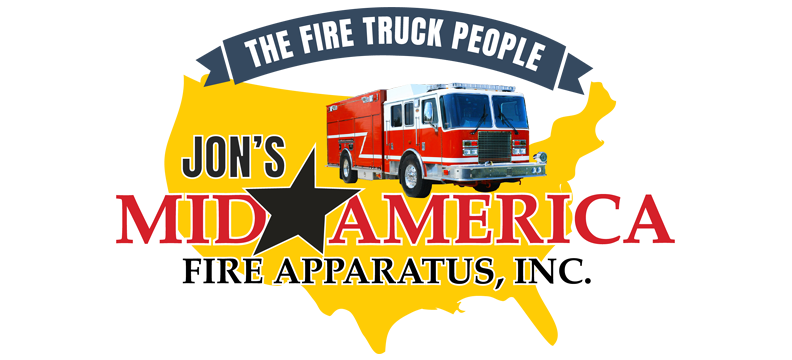Because your fire apparatus generally doesn’t take long trips, tire safety is often an afterthought. However, tires are vitally important to the operation of your fire apparatus. Behind fuel, tires are the second-costliest items when operating a fleet.
Today’s blog from Jon’s Mid-America Fire Apparatus outlines the importance of tire safety and replacement for your vehicles.
Related Post: The Importance of Regular Fire Apparatus Equipment Checks
Miles on Tires
Tires are usually the last thing you think of when replacing vital parts of your fire apparatus. Your trucks rarely travel more than a few miles one-way, and they don’t run at high speeds for very long if at all. Yet more and more departments are putting 15,000 miles or higher on a vehicle every year, whereas 20 years ago, trucks may get 50,000 miles in a 20-year lifespan.
Considerations
Your department has many considerations when it comes to wear and tear on the tires of your fire apparatus.
- Warranties. Manufacturer’s warranties are one factor. Most manufacturers have warranties that expire at six years from the date of manufacture, according to the NFPA.
- Chemical aging. Chemical aging may wear out tires faster than simple wear and tear due to road driving. Warmer climates, like those found in Southern California, Texas, Arizona, and Florida, degrade tires faster compared to cooler, northern climates.
- Tread wear. Tread wear is often the most common factor when looking into tire replacement for fire apparatus. However, tire aging due to heat, oxidation, and conditions of the tire also come into play, often before tread wear is an issue.
- Storage conditions. How and where you store your fire apparatus affects the aging process, particularly with sidewalls. Long periods of inactivity, exposure to high levels of ozone, long periods of exposure to air and sunlight, and excessive washing using alcohol or petroleum-based cleaners all affect how your tires age, regardless of the tread wear.
- Inflation. Proper inflation is a must when it comes to tire wear on your fire apparatus. Follow the vehicle manufacturer’s instructions for the right levels of tire inflation.
- Fire conditions. It may not be possible to park your fire apparatus where you want it. Too close to a fire, and your tires melt. Tires may also come in contact with chemicals, fire retardant, and water. When responding to an accident, fire apparatus may run over glass, debris, oil, and chemicals.
Regular Inspections Are Necessary
The NFPA’s recommendation of seven years for tire replacement comes with a huge caveat: There’s no empirical data to back up the assertion. The NFPA strongly recommends that observing the wear and tear of tires is critical to determining when to replace tires.
Your department should remove tires from service for the following reasons:
- Tread wear beyond the minimum tread depth
- Tire damage like cuts, bulges, and cracks
- Constantly improper inflation pressure
- Improper storage conditions
How to Take Care of Your Fire Apparatus Tires
Check your fire apparatus tires on a regular basis for proper inflation, bulges, cracks, and tears. Regulations require a yearly inspection at a minimum. Most certainly inspect your tires after returning the vehicle from an emergency scene. Shattered glass, debris, heat, and chemicals can all affect fire apparatus tires.
Store your tires properly. Indoor storage in climate-controlled conditions is recommended. If you can’t store vehicles indoors, cover the tires with appropriate covers to protect them from the elements.
Related Post: Keep Your Fire Apparatus Fleet Running With a Preventive Maintenance Plan
Tire Inspection From Jon’s Mid-America Fire Apparatus
Jon’s Mid-America has a service department that inspects your fire apparatus and makes repairs on your equipment. If you notice a problem with your tires, bring your equipment to one of our two locations and we’ll take a look. Contact Jon’s Mid-America or call (417) 887-0534 in Southwest Missouri or (816) 625-1286 in the Kansas City area.



